Sussex house combines ultra-low energy consumption with traditional crafts
BakerBrown Studio’s new house in the south of England sets high standards for low energy consumption
Jim Stephenson - Photography

BakerBrown Studio has established a reputation for sustainable architecture, having spent several decades working on low-energy building solutions. These range from minimising emissions during construction to designing interiors that maximise energy efficiency. This new house design in the Sussex village of Offham is a good example. The home combines locally sourced materials with an emphasis on passive solar heating and stack ventilation.
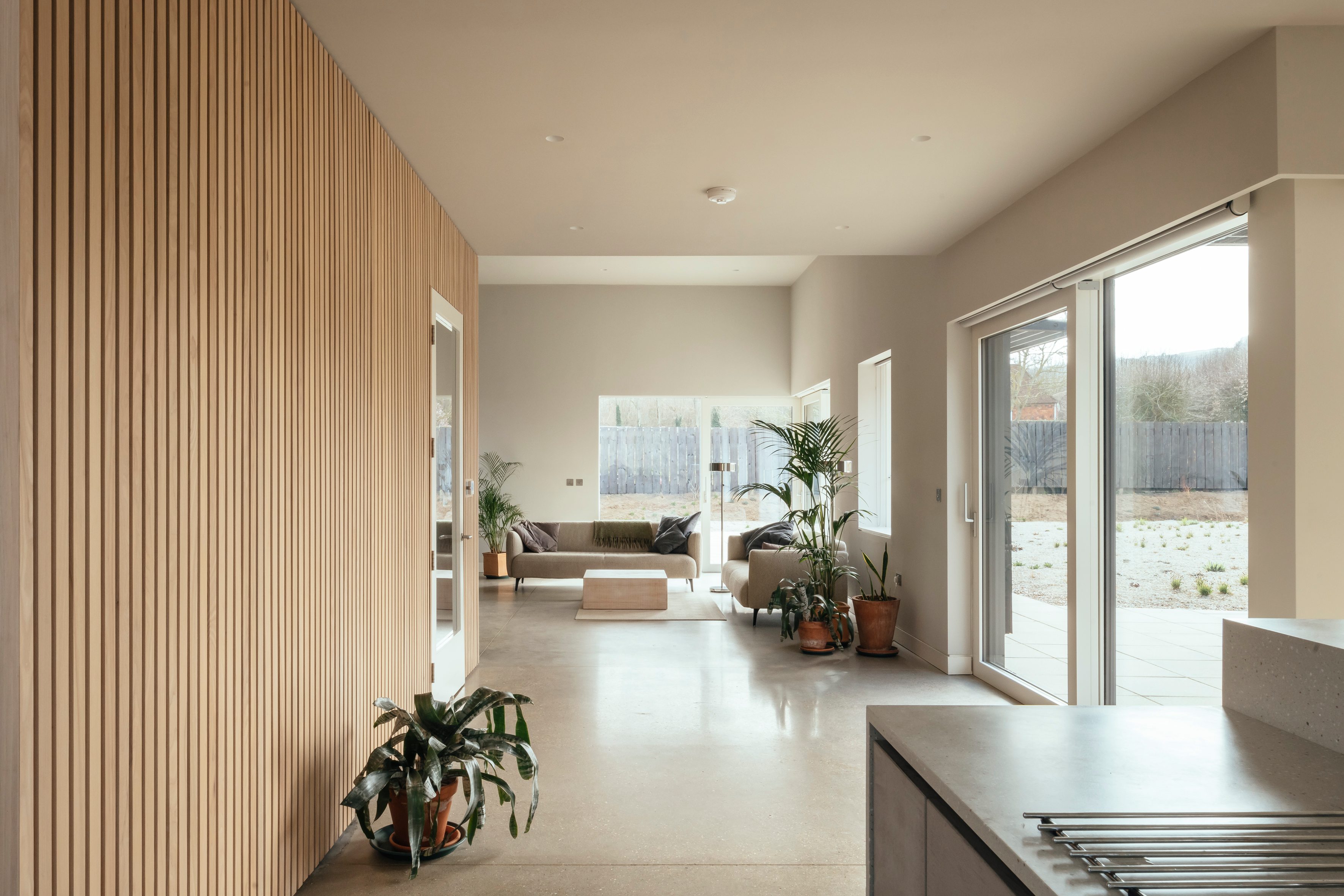
The largely single-storey property is aligned to make the most of solar gain, as well as the surrounding countryside views. The spatial arrangement integrates a number of shaded courtyards and terraces that give the impression of rooms bleeding into the landscape. Appropriately enough, the raw materials for the façades come from the surrounding fields.

Flint stones were dug up to form the cladding, set in place with traditional raked mortar, using an experienced local contractor (The Flintman Company).
The meticulous process ensured the corners and edges of the structure look sharp and refined to emphasise the solidity of the house. Charred British larch was used to clad the other exterior walls.
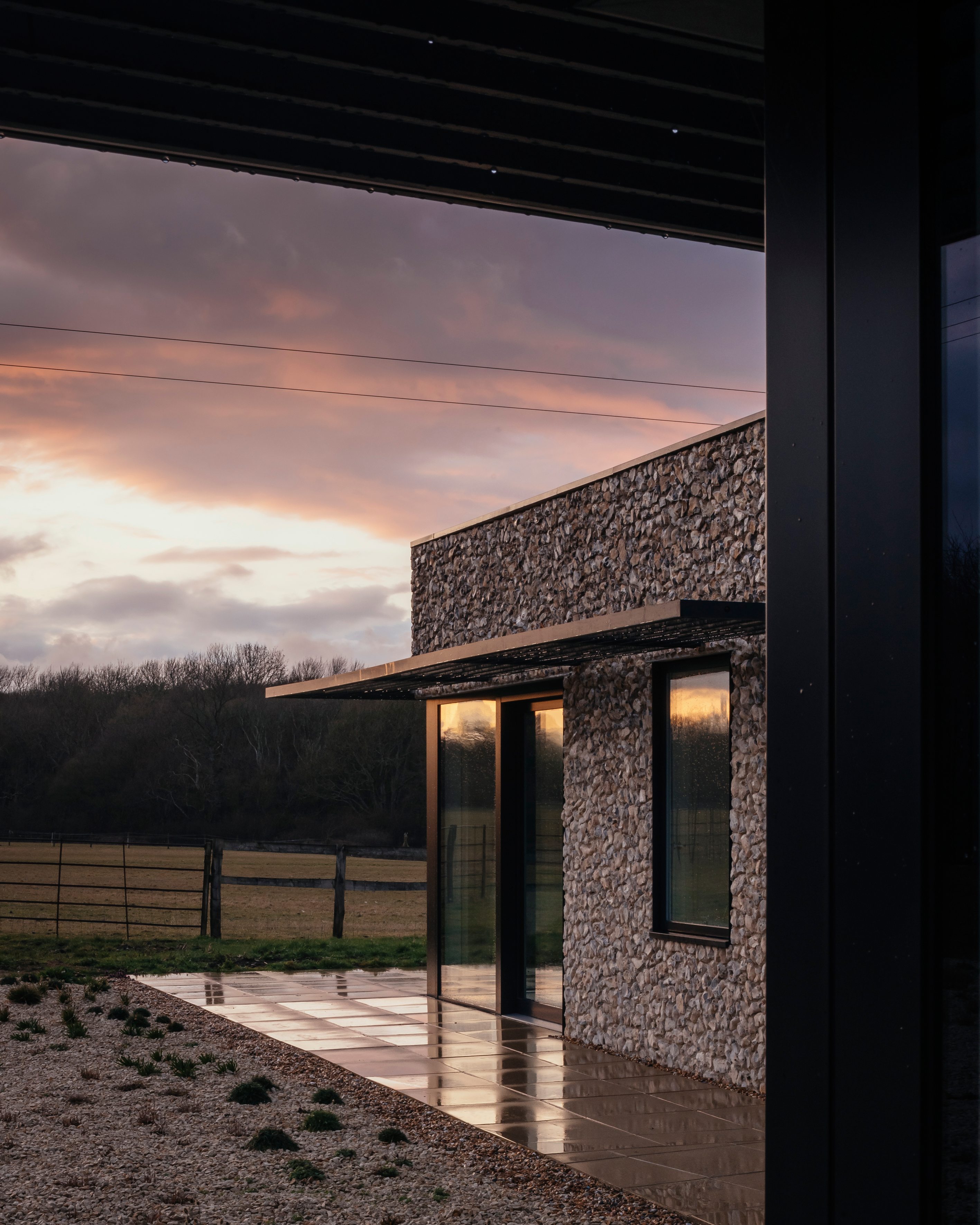
Inside, the living and sleeping spaces are joined by a home office. A large ash sliding door can close off the private elements of the house, which include the only upstairs room, the master bedroom.
From here there are views across the fields and woodland, with a bay window seat positioned to make the most of the landscape.
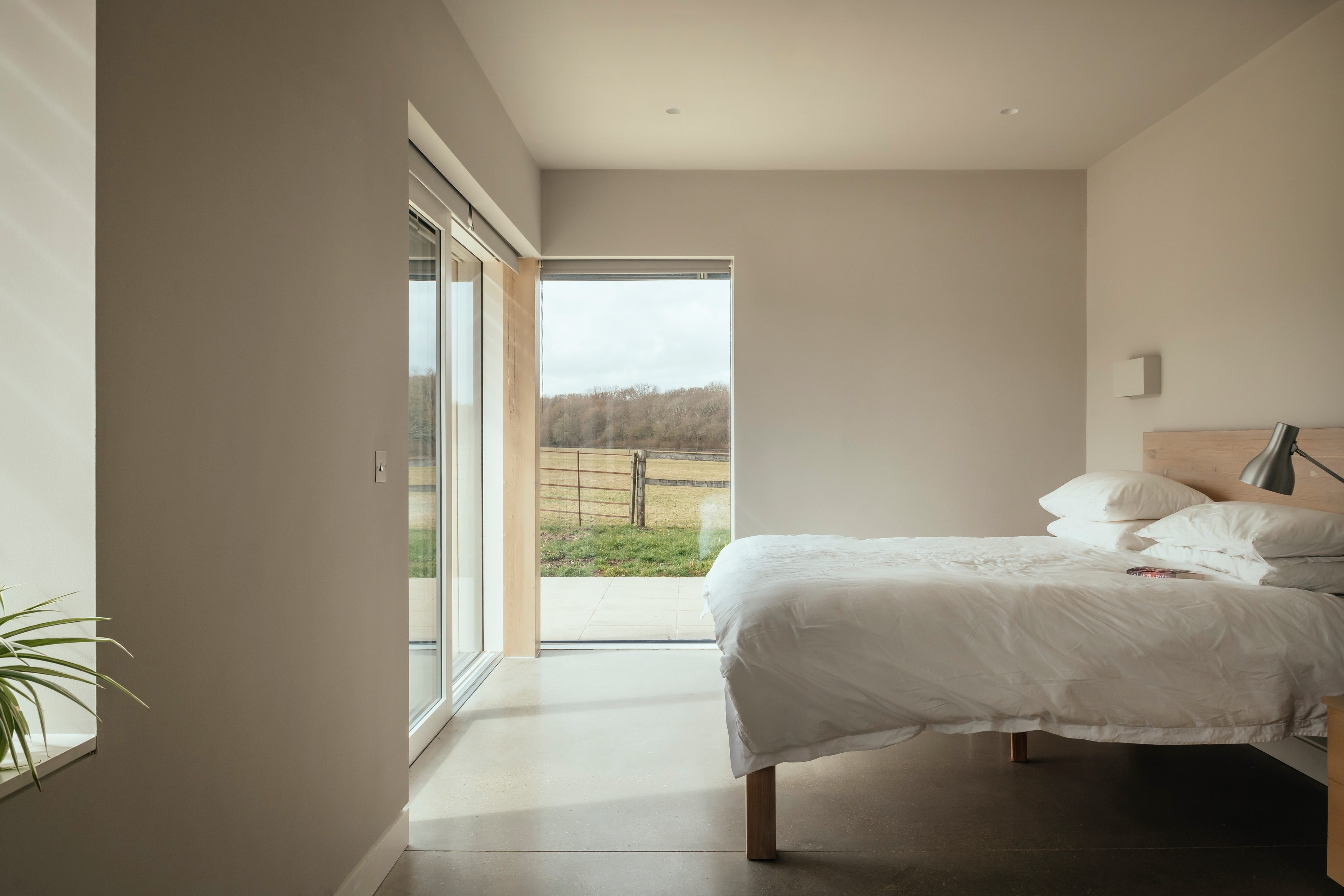
Passive heating and cooling means little unless the structure is highly insulated. The Offham house uses a timber frame, packed with insulation, along with stack ventilation to draw air through the structure.
Receive our daily digest of inspiration, escapism and design stories from around the world direct to your inbox.
Designed along Passivhaus principles, the new structure has PV cells, an air-source heat pump and a pioneering ‘solar thermal’ driveway, which incorporates heating loops to help bolster the home's hot water supply during the summer months. The end result is a building that is carbon negative when in operation.
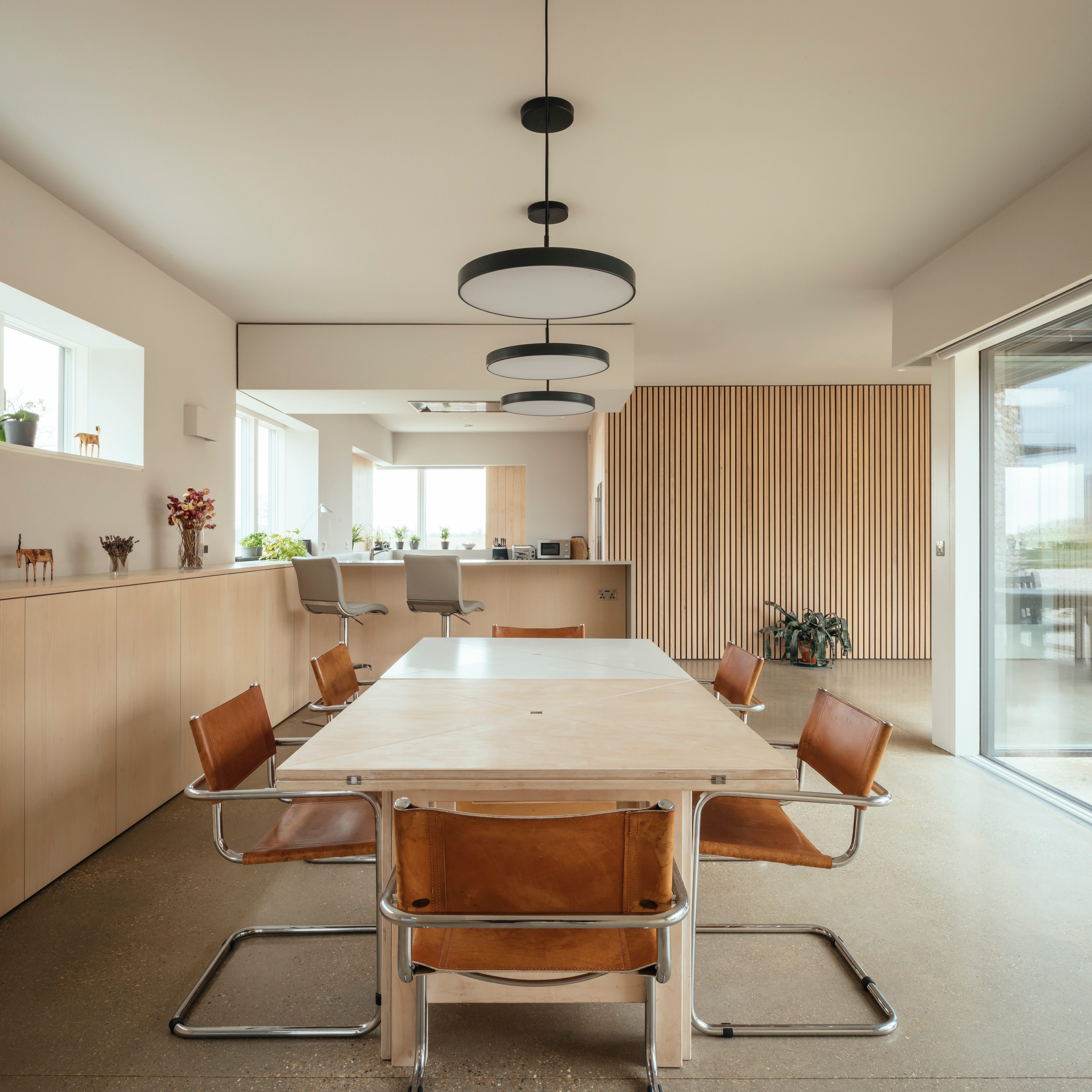
BakerBrown, which was founded in 1994, has extensive experience of low-energy design, including the construction of the UK’s very first A* Energy Rated Building, and a project called The Waste House, billed as the world’s first building made of waste products.
The house in Offham continues this admirable track record of low-energy design, proving that refined design and innovation are entirely consistent with sustainable architecture.
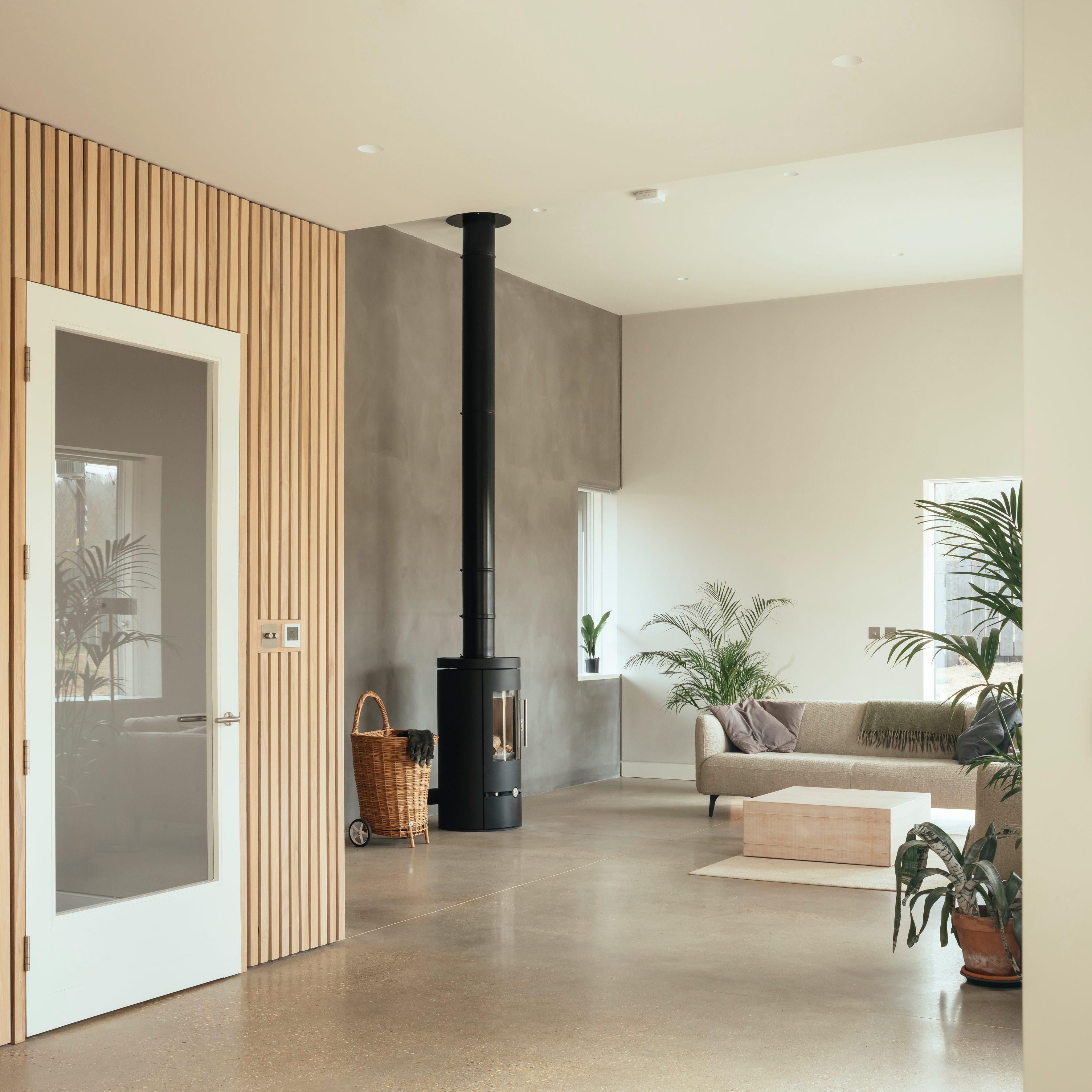

INFORMATION
Jonathan Bell has written for Wallpaper* magazine since 1999, covering everything from architecture and transport design to books, tech and graphic design. He is now the magazine’s Transport and Technology Editor. Jonathan has written and edited 15 books, including Concept Car Design, 21st Century House, and The New Modern House. He is also the host of Wallpaper’s first podcast.
-
 Three new smartwatches showcase new frontiers in affordable timepiece design
Three new smartwatches showcase new frontiers in affordable timepiece designLong may you run: smartwatches from Withit, Kospet and OnePlus favour function and value above all else, demonstrating just how much the smartwatch has evolved in recent years
-
 Debuts, dandies, Demi Moore: 25 fashion moments that defined 2025 in style
Debuts, dandies, Demi Moore: 25 fashion moments that defined 2025 in style2025 was a watershed year in fashion. As selected by the Wallpaper* style team, here are the 25 moments that defined the zeitgeist
-
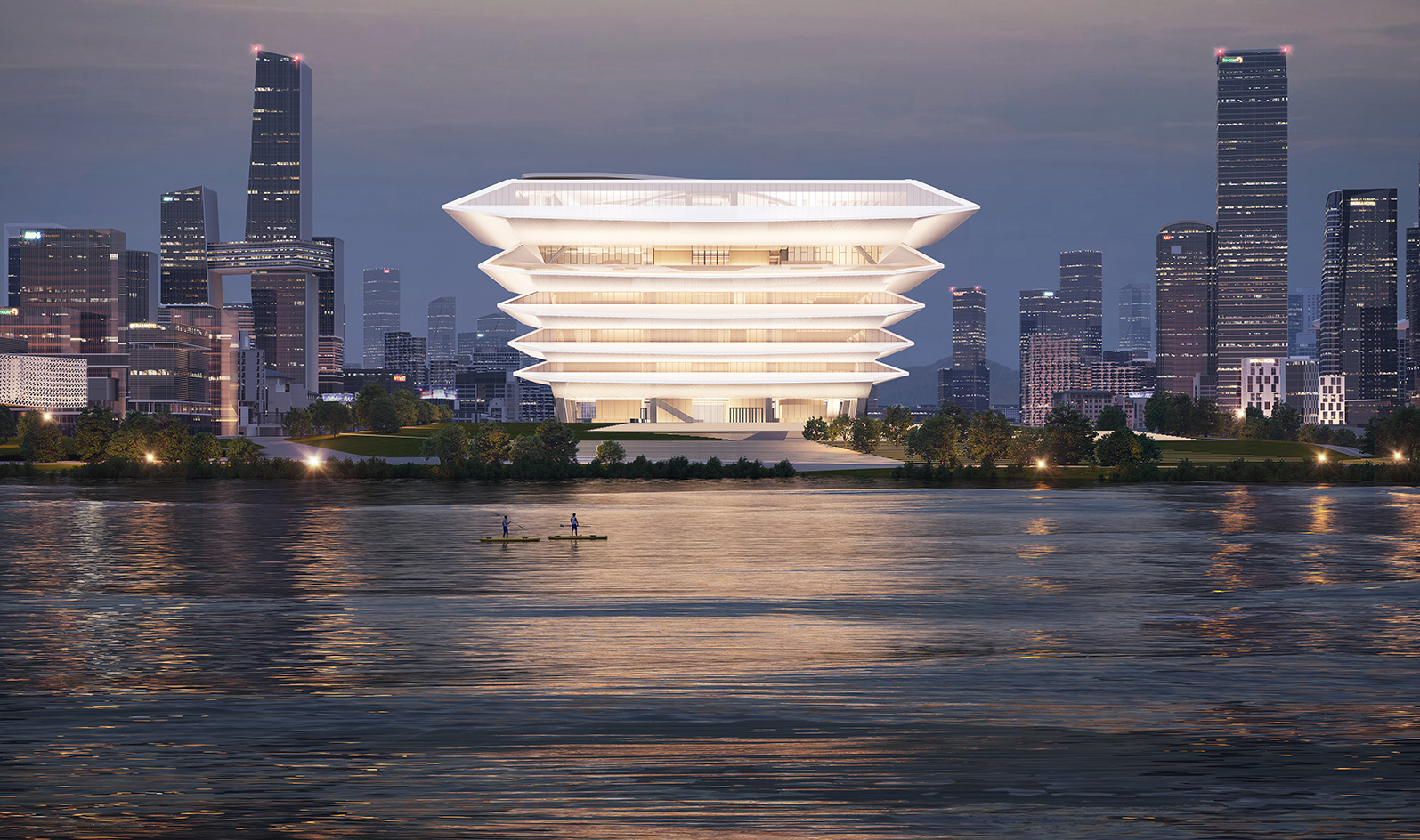 The RIBA Asia Pacific Awards reward impactful, mindful architecture – here are the winners
The RIBA Asia Pacific Awards reward impactful, mindful architecture – here are the winnersThe 2025 RIBA Asia Pacific Awards mark the accolade’s first year – and span from sustainable mixed-use towers to masterplanning and housing
-
 Arbour House is a north London home that lies low but punches high
Arbour House is a north London home that lies low but punches highArbour House by Andrei Saltykov is a low-lying Crouch End home with a striking roof structure that sets it apart
-
 A former agricultural building is transformed into a minimal rural home by Bindloss Dawes
A former agricultural building is transformed into a minimal rural home by Bindloss DawesZero-carbon design meets adaptive re-use in the Tractor Shed, a stripped-back house in a country village by Somerset architects Bindloss Dawes
-
 RIBA House of the Year 2025 is a ‘rare mixture of sensitivity and boldness’
RIBA House of the Year 2025 is a ‘rare mixture of sensitivity and boldness’Topping the list of seven shortlisted homes, Izat Arundell’s Hebridean self-build – named Caochan na Creige – is announced as the RIBA House of the Year 2025
-
 In addition to brutalist buildings, Alison Smithson designed some of the most creative Christmas cards we've seen
In addition to brutalist buildings, Alison Smithson designed some of the most creative Christmas cards we've seenThe architect’s collection of season’s greetings is on show at the Roca London Gallery, just in time for the holidays
-
 In South Wales, a remote coastal farmhouse flaunts its modern revamp, primed for hosting
In South Wales, a remote coastal farmhouse flaunts its modern revamp, primed for hostingA farmhouse perched on the Gower Peninsula, Delfyd Farm reveals its ground-floor refresh by architecture studio Rural Office, which created a cosy home with breathtaking views
-
 A revived public space in Aberdeen is named Scotland’s building of the year
A revived public space in Aberdeen is named Scotland’s building of the yearAberdeen's Union Terrace Gardens by Stallan-Brand Architecture + Design and LDA Design wins the 2025 Andrew Doolan Best Building in Scotland Award
-
 A refreshed 1950s apartment in East London allows for moments of discovery
A refreshed 1950s apartment in East London allows for moments of discoveryWith this 1950s apartment redesign, London-based architects Studio Naama wanted to create a residence which reflects the fun and individual nature of the clients
-
 In this Cotswolds home, drama meets minimalism
In this Cotswolds home, drama meets minimalismCotswolds home Hiaven house, with interiors designed by McLaren Excell, is a perfect blend of contemporary chic and calm, countryside drama